May 20, 2025 | 06:21 GMT +7
May 20, 2025 | 06:21 GMT +7
Hotline: 0913.378.918
May 20, 2025 | 06:21 GMT +7
Hotline: 0913.378.918
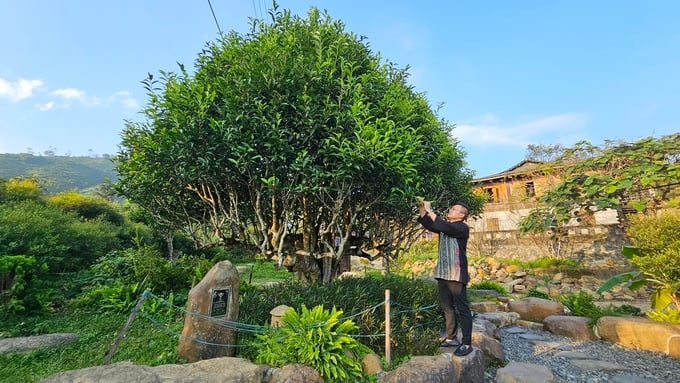
Dang Thai Son next to an ancient tea tree over 400 years old in Suoi Giang commune, Van Chan district, Yen Bai. Photo: Van Viet.
“My birthname predicts a life associated with mountains, not delta regions. When I arrived at Suoi Giang, I fell in love with this place. The longer I stay here, the more I see the value of the favorable weather and the countless effects that Suoi Giang tea brings,” says Dang Thai Son, owner of Suoi Giang Tea Cultural Space - a unique business model for tourism.
The young man says his decision to go to Suoi Giang in 2019 was fate. Born and raised in Nghia Lo and only about 15km from Suoi Giang, Son never knew this place was so beautiful.
On a normal day in Suoi Giang, people will always experience four seasons: cold at night; cloudy in the morning, covering the village; sunny afternoon with blue and clear sky; and golden sunlight before sunset.

A corner of Suoi Giang viewed from above. In a day here, four seasons pass, creating a unique space and a special tea flavor. Photo: Thai Son.
“Now that there is tourism, everything is much more beautiful. From the road onwards, there was nothing when we first came here. No wonder tourists come here and only take about 15 minutes to leave, only enough to take a few photos. There was nothing holding them back,” Son says.
The fateful trip helped Son learn one thing: in addition to the fields of Muong Lo and Nghia Lo, which are famous worldwide, Yen Bai also has a rich Mong cultural space in Suoi Giang, and ancient tea trees that are approximately five centuries old.
Tea first and tourism later was Son’s decision after a few days of both joy and fear with the “Mong people’s logic” here. “At first we thought we would open a space to sell tea, then combine it with tourism. I have little money, so I must take it step by step. Now more customers are coming and staying longer, which is very nice to see. Sometimes when I sit alone and look out, I remember the first days coming here, the feelings are very hard to describe.”
The wariness of most Mong people in Suoi Giang with strangers was the first difficulty Son experienced. Later, Son discovered that he had to drink wine with them. Without a cup of wine, Mong people do not talk. They are hesitant and afraid. So the meals with Son and his colleagues turned into more alcoholic meals, sometimes causing stomach bleeding. They eat together, drink together, and sleep together in a stilt house. People who used to answer questions bluntly then enthusiastically took Son around the mountains. Son got to see animals, streams, and most importantly the treasure of the Mong people - ancient tea trees.

Suoi Giang tea cultural space. All items here are sourced from the local area, arranged by the skillful hands of the Mong people. Photo: Van Viet.
Initially, villagers said trees were over 400 years old. Son did not believe it. Later, when he and agricultural scientists went on a survey, Son realized that his knowledge was too narrow compared to the Mong people who have been associated with this place since ancient times.
Not only Vietnamese scientists, but the tea tree in Suoi Giang also surprised Soviet academicians. According to the Yen Bai Province Electronic Information Portal, academician K. M. Djemmukhatze (Institute of Biochemistry, Soviet Academy of Sciences) came to Suoi Giang to research in the '60s of the last century. The scientist exclaimed: “I have been to 120 countries with tea worldwide, but I have never seen a perennial tea tree like Suoi Giang. Is this the origin of the tea tree? The tea here is unique, its tastes contain the 18 top tea flavors in the world.”
Shan Tuyet tea is a plant that grows naturally in high mountains, nourished by the vitality of the earth and sky, so the tea buds and leaves are very large, have a dark green color, and the leaf surface is covered with a thin layer of fluff as white as snow. That's why the tea is called Shan Tuyet (tea soaked in snow on high mountains).

Two Mong women picking tea. The secret to picking tea and tea leaves of the Mong people is not easy to learn. They calculate the time, amount of harvest, and picking method in their own way. Photo: Thai Son.
Shan Tuyet tea is harvested in 3 crops a year, of which the last crop is usually around August to September of the lunar calendar. When the harvest season comes, visitors will see the image of a Mong girl in an eye-catching flared dress climbing up ancient tea trees to pick young green buds. The older Shan Tuyet tea is, the more precious it is; the more snow-white it is, the stronger its medicinal properties. Therefore, their hands quickly pluck each bud, but still gently so as not to lose the white layer of snow on top.
The grey-white shan tea buds, covered with a layer of translucent snow-white powder, are picked and copied with the experience and skillful hands of the Mong people. To pick young tea buds, one often has to climb the high branches of ancient tea trees. With an altitude of 1,400m above sea level, in winter there is often no sun, and in summer mornings, tea buds are covered in fog, so picking them feels painful.
Suoi Giang commune nowadays is very different from before Covid-19. The paved road is spacious, with enough room for medium-sized passenger cars. Private vehicles can comfortably avoid each other. Through many winding slopes, homestays in Suoi Giang gradually appear: Giang A, Giang B, Pang Can and Ban Moi villages. Hundreds of households are managing homestays. Suoi Giang is a highland commune of Van Chan district with 98% of the Mong ethnic group, with a long tradition of solidarity, attachment, and hospitality.
They are the people who preserve both the spirit and body of a population of 400 ancient tea trees over 100 years old. This population of 400 ancient tea trees was recognized by the Vietnam Association for the Protection of Nature and Environment as a Vietnamese Heritage Tree in 2016.
In the past, the tea tree gave them a drink. Now, it brings more economic value than that. Shan Tuyet tea is now processed into many types: black tea, green tea, matcha tea, white tea; even toothpaste made from tea, and soap extracted from tea essence.
The sophistication and ingenuity of the Mong people in Suoi Giang is reflected in the flower rows along the road. Not too much, just enough to create a highlight for an entire tourist area. “I gave them ideas, but the villagers do it all by themselves. They are extremely skillful. I still think that in the future, the children here will become famous architects and designers. Many people only know the Mong people, but few know the sophistication of the Mong people. It's just that they rarely show it,” Son said.

The Mong people in Suoi Giang know how to do tourism and preserve their own cultural identity. Photo: Thai Son.
The young Nghia Lo man is now jokingly called Giang A Son by the villagers, after the popular surname of the Mong people. Besides homestays, Suoi Giang also has Happy Village and Shared Classroom models. Son hopes that these models will bring Mong culture and Shan Tuyet tea to the continent, not just within Vietnam. Currently, the “happiness index” that Yen Bai province has been implementing since 2022 can be clearly seen in Suoi Giang.
Since knowing how to develop tourism, the Mong people have cared for their houses. Not only homestays, people also invest in building their toilets at home, covered with stone. Not fancy ceramic tiles or stones, but from stones in the mountains and streams. Art comes from life, from the observation and delicate hands of young Mong people who were only engrossed in eating and drinking. It can be said without exaggeration that it was Son and a number of others who contributed to lighting up the Mong village in Suoi Giang.
Before, there was a vicious cycle that kept making the village undeveloped. Child marriage, lots of kids, alcoholic husbands, and the wives alone cannot take care of the family. Children drop out of school and go to work early. In the countryside, people get married early, and when they leave home to work, the salary is low due to a lack of qualifications. That tragedy keeps repeating itself, burying a bright vision.
Many of Son’s associates once exclaimed about excessive drinking: “Several years of brotherly love is not as good as being drunk once.” Initially, the Mong people were hospitable, but the change in appearance from the wine cup greatly damaged their image. There is so much alcohol but no one to renovate the house. Fleas cling to blankets and mats. Son said the most haunting thing was that in 2019 when he met the villagers, he heard the sound of fleas jumping and clinging to his feet.
After the drinking session, Son could not sleep all night. Fleas bite all over the body. Son and his friends now joke that those bugs suck both blood and alcohol, so they all woke up at midnight. Going to the toilet is also a trauma when the homeowner gives each person a hoe. “Go out there, take a hoe, dig a hole and clean it yourself,” the homeowner says.
Only later, when Son had convinced a few households to remodel, clean houses, change to bright color bedding, and separate toilets, did things gradually change. The Mong people realized they could do tourism from their own gardens, house and tea trees. The house is clean and crowded. If the house is dirty, no one comes.
Gradually, Suoi Giang is now as beautiful as many high-class tourist areas. The beauty is also evident in Suoi Giang with many children from the Sharing Class who can now talk fluently in English with tourists about the history of the village and its ancient tea trees. All are aware of their homeland and the treasure of Shan Tuyet tea.

The shared classroom model was developed Son and colleagues. Mong children come here to learn English and Chinese for free. Children are also taught traditional dancing and history by Mong artists. Photo: Thai Son.
If they had only sold food and relaxation, Suoi Giang probably would not attract as many international visitors as it does now. Suoi Giang Tourism Club, chaired by Son, proactively comes up with an impressive way to do it: Looking for secret messages from the Mong people.
Tourists will be taken to the village house, and then pick tea to process. From there, they will receive a rock - a Mong secret piece. It may be a question: What do Mong people abstain from the most; or Does Mong people’s New Year come earlier or later than the Lunar New Year. Answering the question, visitors will be taken by local people to the next place to receive secret messages, such as an ancient tea tree or another house. Gradually, after collecting 10 secret letters, visitors understand the culture and life of Suoi Giang villages.
Mong people can also come for an evening to enjoy food together. Or maybe, it will be hidden right in a tea session at Suoi Giang Tea Cultural Space.
The stove, the roof, the farming tools, and the 80-year-old flintlock gun are all originally from Suoi Giang. Still, the stones on the stream, the branches and leaves here, the native Mong people and Son create a very private, peculiar space. That space is for silence, for feelings, no hustle and bustle, no loud noises from throats hoarse from excessive alcohol. “Sometimes I like to sit alone. Everywhere I look I see history, the wildness and magnificence of the mountains and the people here,” Son sums up his space.
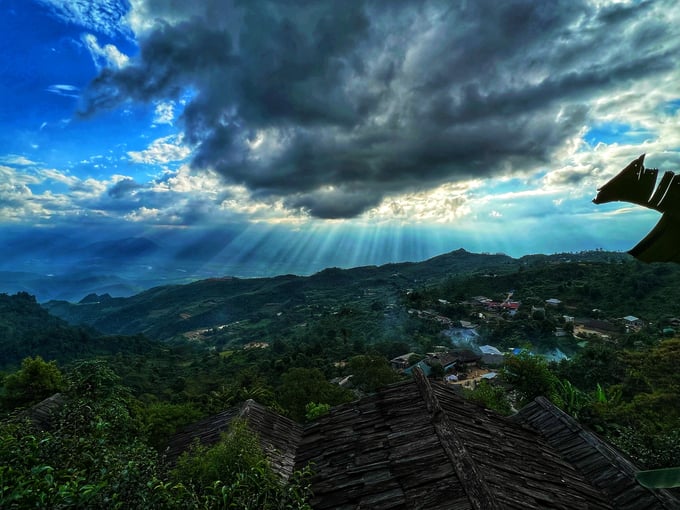
Magnificent, pristine scenery in Suoi Giang. Photo: Thai Son.
Suoi Giang tea is picked and prepared with the experience and skillful hands of the Mong people. To pick young tea buds, Mong people must climb high branches of ancient tea trees to select fresh tea buds to take home.
According to the People’s Committee of Suoi Giang commune, the population of ancient Shan Tuyet tea trees grows naturally at an altitude of 1,000 - 1,400 m above sea level, surrounded by clouds all year round. Scientists have identified these ancient tea trees as the ancestors of tea trees in the world. Shan Tuyet tea trees are suitable for the climate, soil, and water sources in Suoi Giang so they are very green and lush. The Mong people never had to fertilize or spray pesticides. Therefore, ancient tea is very popular in the market, because in addition to excellent quality, Shan tea is also absolutely clean, organic tea.
One year, Shan Tuyet Suoi Giang tea harvests three crops: spring, summer, and the last crop around August-September of the lunar calendar. Suoi Giang tea is picked and prepared with the experience and skillful hands of the Mong people. To pick young tea buds, Mong people must climb high branches of ancient tea trees to choose fresh tea buds to take home.
According to the People’s Committee of Suoi Giang commune, the population of ancient Shan Tuyet tea trees grows naturally at an altitude of 1,000 - 1,400 m above sea level, surrounded by clouds all year round. Scientists have identified these ancient tea trees as the ancestors of tea trees in the world. Shan Tuyet tea trees are suitable for the climate, soil, and water sources in Suoi Giang so they are very green and lush, the Mong people do not have to fertilize or spray pesticides. Therefore, ancient tea is very popular in the market, because in addition to excellent quality, Shan tea is also absolutely clean tea.
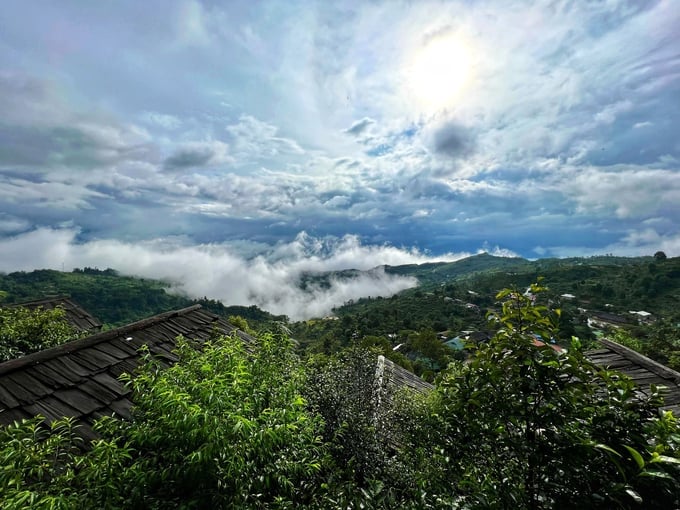
Ancient tea trees cover the roofs of the homes of the Mong people in Suoi Giang. Photo: Thai Son.
The Mong people in Suoi Giang cherish the tea tree, considering it the spirit of this land. Every year, they hold a solemn worship ceremony. The host of the worshiping ceremony is the village elder, artisan Giang Nha Lu. He is an elderly man, virtuous, reputable in the village, and understands the customs and habits of the Mong people.
The offerings express to heaven and earth, gods, and the gods of tea the Mong people’s sincerity. They pray for the gods of heaven, earth, and tea to bless and protect all things, for good weather and wind, and for prosperous lives.
Mr. Giang Nha Lu says that in the past when they first settled, there were only a few roofs here. They were always hungry, cold, and miserable, and only knew labor: cultivating and hunting. Thanks to God, the Party, and the Government, the Mong people have precious tea trees, a significant source of income, stable jobs, eliminated hunger, reduced poverty, and many improvements in life.
For hundreds of years, nature’s tea tree has come to life and become a cultural symbol of this beautiful, majestic mountainous region. Tea on the hills, tea in the garden, tea growing in forests, and tea trees enter the lives of people’s spirits. Growing tea and enjoying tea has become a need and a culture.
Drinking Suoi Giang tea, tourists worldwide will feel the crystallization of human ethics: respect, trust, love, and care regardless of class or age, ethnicity, season, etc. Drinking Suoi Giang tea is to feel the height and breadth of heaven and earth, is the harmony between humans and nature to bring closer to each other.
Translated by Quynh Chi

(VAN) World Environment Day 2025 (June 5) carries the theme 'Beat Plastic Pollution' continuing to emphasize the global urgency of addressing the plastic waste crisis.
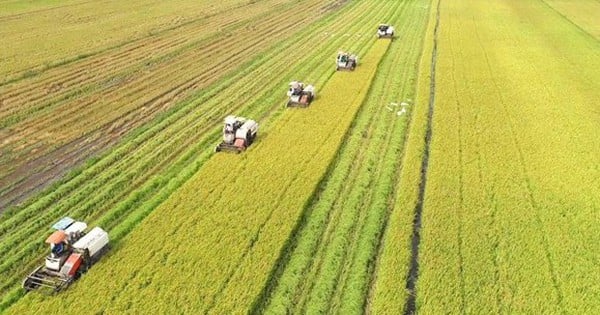
(VAN) This was the assessment shared by experts at the workshop titled 'Assessing the Role and Potential of Low-Emission Rice Production Systems in Vietnam,' held on the morning of May 19.

(VAN) Cai Rong Port is the fisheries control center of Quang Ninh, helping to monitor fishing vessels, combat IUU fishing, and remove the EC's 'yellow card'.
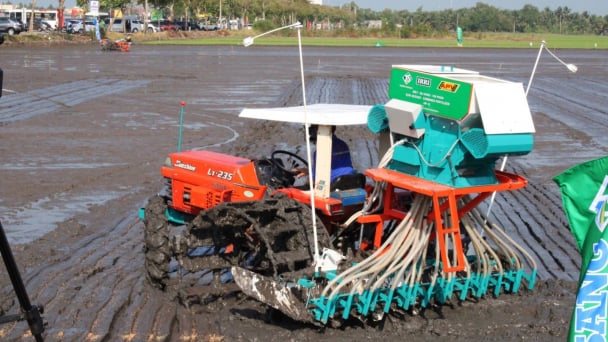
(VAN) The German Agricultural Society (DLG) explores the possibility of establishing a mechanization service center in Vietnam’s Mekong Delta to support farmers in accessing and utilizing advanced machinery.

(VAN) On May 16, the Department of Water Resources Management, in collaboration with the Food and Agriculture Organization of the United Nations (FAO), held a signing ceremony for the GEF-8 project document.

(VAN) Food safety, mechanization, vocational training, and market opening are key areas of cooperation expected between the Vietnamese Government and the Federal Republic of Germany.

(VAN) Deputy Minister Nguyen Quoc Tri also expressed his hope that Cuba will soon overcome its current challenges, attain food security, and further expand cooperation with Vietnam.